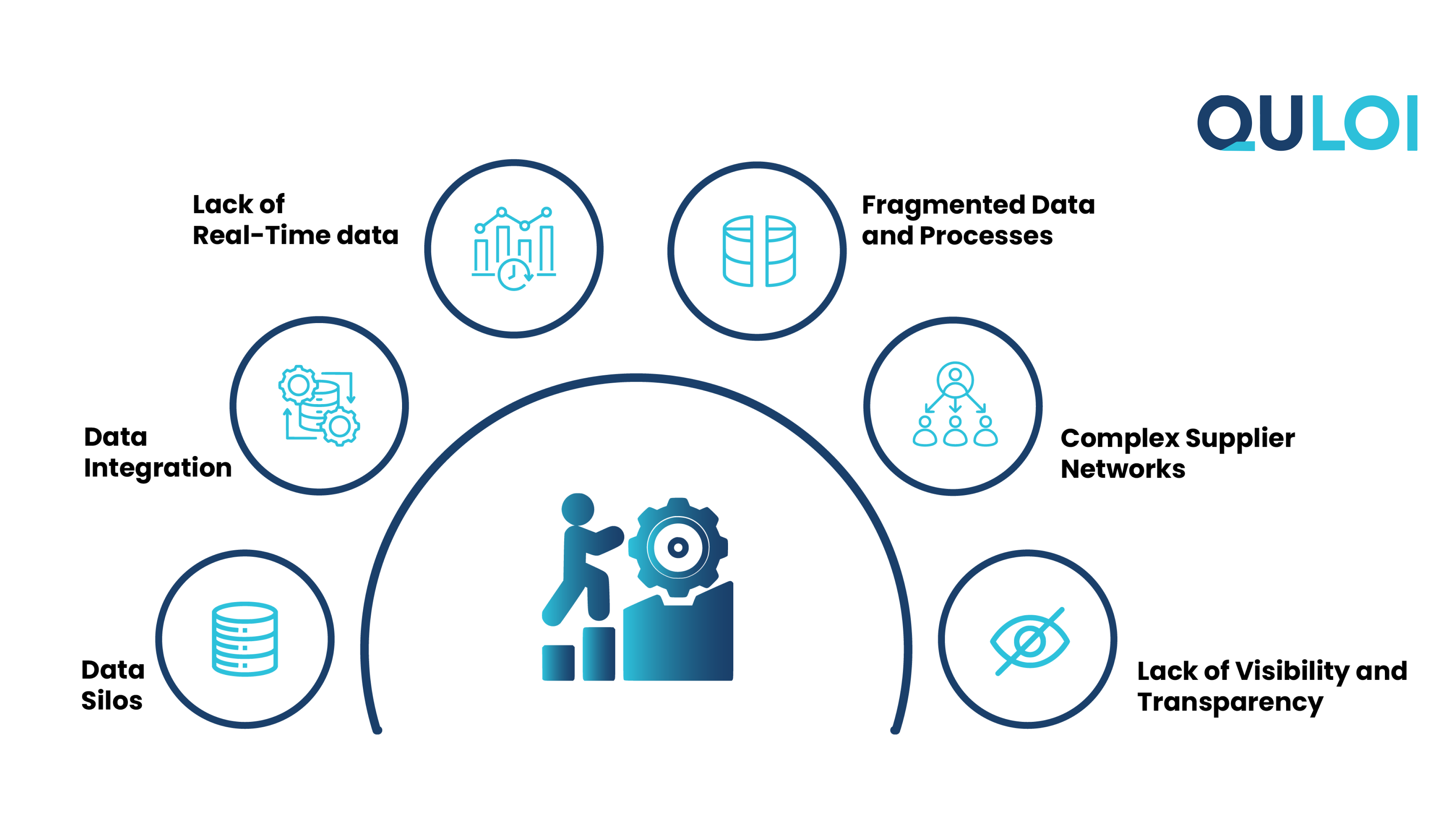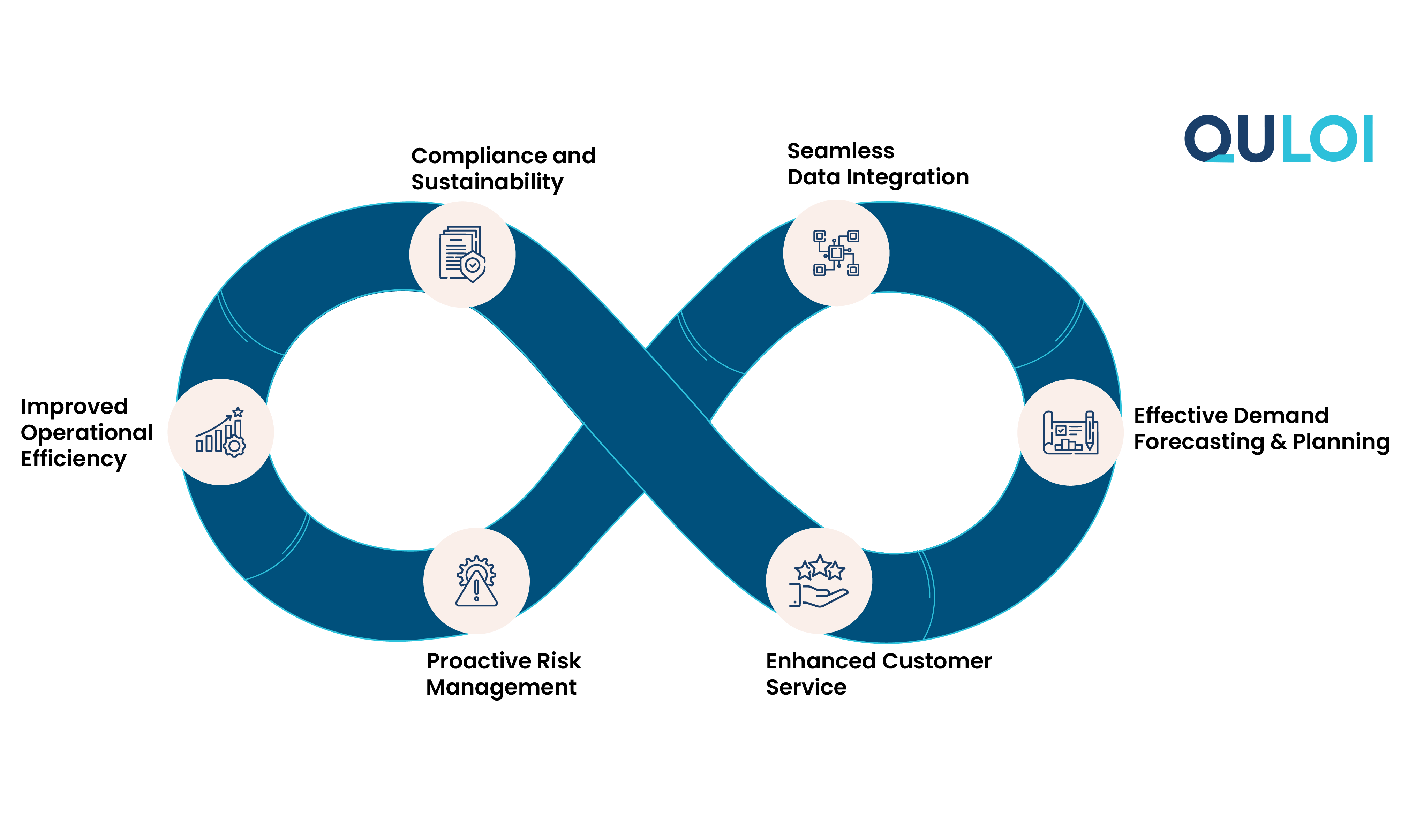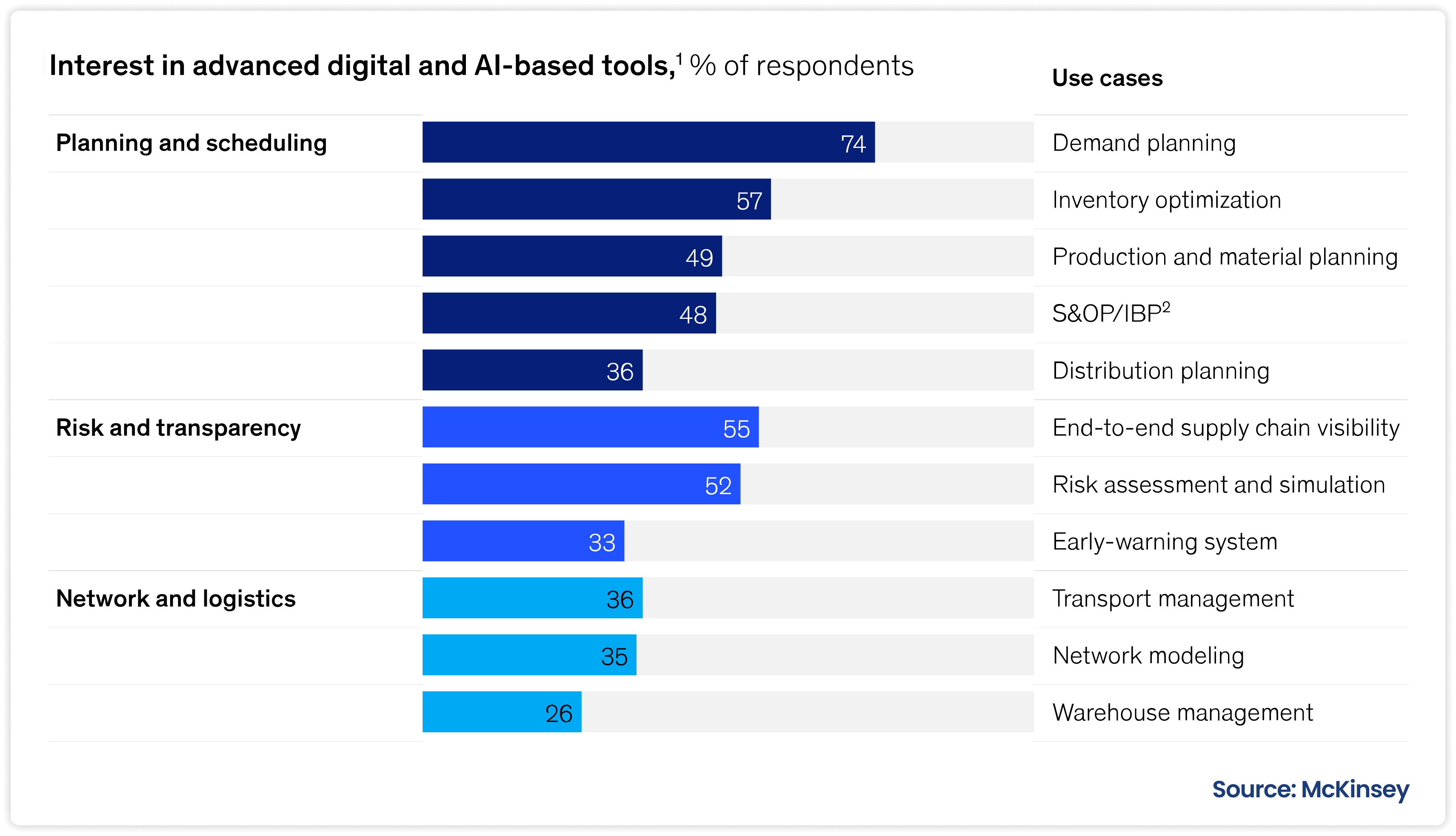How Digitalization Enhances Supply Chain Visibility
Supply chain visibility has long been crucial in the fast-paced global marketplace. Lack of visibility can lead to significant challenges and repercussions for businesses and consumers. The key to addressing these challenges is first understanding what visibility in the supply chain means. Digitalization can transform supply chain operations, from planning to logistics. End-to-end supply chain visibility acts as a catalyst for operational excellence. It enables agile decision-making, increased efficiency, and superior customer satisfaction.
What is Supply Chain Visibility?
Supply chain visibility (SCV) refers to tracking and monitoring goods and/or products as they move through the supply chain. It enables organizations to collect, analyze, and share reliable data and information across the entire supply chain network, including suppliers, manufacturers, distributors, retailers, and customers.
End-to-end supply chain visibility enables a live view of what’s happening at every stage of supply chain. With transparency and visibility at every stage of supply chain, supply chain stakeholders can optimize previously inefficient routes and manage customer expectations by giving them a real-time view of orders and shipments at any given time. This improves the supply chain’s speed, accuracy, agility, and granularity while reducing operational costs. Additionally, a transparent and interconnected supply chain fosters stakeholder collaboration for process optimization and improved efficiency.
What is the Importance of Supply Chain in Visibility?
Effective supply chain management is a key driver of business success. However, it is disconcerting to note that just 13% of firms have supply chain visibility as reported by a Deloitte study. The report further found that up to 22% of firms have no visibility beyond their immediate suppliers.
The supply chain directly impacts customer satisfaction, the lifeblood of any business. With end-to-end visibility, companies can enhance compliance, optimize operations, forecast demand accurately, and gain a competitive advantage. This means promptly addressing customer inquiries, maintaining regulatory standards, measuring key performance indicators, making informed decisions, and leveraging insights for collaboration and innovation. Supply chain visibility is no longer an option but a necessity for organizations aiming to thrive in the fast-paced and ever-evolving market.
What are the Top Supply Chain Visibility Challenges?

Data Silos: Information about the supply chain is often scattered across different systems and departments, leading to data silos and a lack of integrated visibility. Data silos prevent the flow of relevant information, hamper data collation, hinder operational performance, and make it difficult to leverage data analytics to gain a bigger picture.
Data Integration: The diverse systems and stakeholders involved in the supply chain often use different data standards, formats, or systems, resulting in data silos and fragmented information. This lack of integration hinders obtaining a comprehensive and real-time view of the supply chain.
Lack of Real-Time Data: Limited access to real-time data can often lead to difficulty tracking supply chain activities. Traditional supply chain models find batch processing highly reliable, resulting in delayed and outdated information. No supply chain can ever be fully prepared for unexpected events, but the absence of real-time data can increase the impact of risk events.
Fragmented Data and Processes: Organizations with fragmented data, assumptions, and siloed decision-making are vulnerable to inaccuracies. This fragmentation can hinder visibility efforts and reduce the opportunities for data sharing and collaboration, as data may reside in different systems or be inaccessible to key stakeholders.
Complex Supplier Networks: Global supply chains often involve multiple suppliers, subcontractors, and logistics providers. As the supply chain network expands, the complexity increases, making it quite challenging to track and trace goods or identify bottlenecks or inefficiencies.
Lack of Visibility and Transparency: If one link in the supply chain doesn’t work, it causes a domino effect, resulting in inconsistencies, loss of information, and delays in all subsequent workflows. This can hurt a company’s margins and jeopardize its competitive edge.
What are the Benefits of Supply Chain Visibility?

Proactive Risk Management: A Blue Ridge study reported that supply chain disruptions could cause adverse losses in terms of finances (62%), logistics (54%), and reputation (54%). With end-to-end supply chain visibility, organizations can proactively identify and mitigate risks before they occur. For instance, they can track potential disruptions caused by political instability, natural disasters, cyber threats, or supplier issues and develop contingency plans to minimize their adverse impacts and maintain continuity in their operations.
Improved Operational Efficiency: Visibility in supply chain enables organizations to identify and eliminate inefficiencies and bottlenecks in their operational processes. Procter & Gamble (P&G) significantly improved their supply chain by implementing supply chain visibility solutions. With real-time data on inventory levels and production schedules, P&G optimized its operations, cut down inventory holding costs, and increased its inventory turnover.
Compliance and Sustainability: Only 9% of organizations say that their supply chains comply with the new rules, with 30% admitting that they are behind in their compliance efforts. With digital supply chain advantage, organizations can monitor and verify product origin, quality, and safety, ensuring regulatory compliance. Moreover, end-to-end supply chain visibility allows companies to track and manage their environmental footprint, promote sustainable practices, and reduce waste throughout the supply chain processes.
Seamless Data Integration: By implementing advanced data integration technologies, like application programming interfaces (APIs) and electronic data interchange (EDI), it becomes easier for manufacturers to facilitate seamless data exchange between different systems. They can achieve data interoperability by using standardized data formats like XML or JSON.
Effective Demand Forecasting and Planning: With real-time supply chain visibility, organizations better understand demand patterns and market fluctuations. Organizations can improve their demand forecasting accuracy by analyzing data on sales and ongoing market trends. Walmart has been investing massively in supply chain transformation, and recent studies affirm that the company leveraged AI and ML to track and trace products from farm to shelf. This initiative helped Walmart optimize inventory levels, identify and recall contaminated food products faster, and reduce the risk to customers – resulting in cost savings and improved profitability.
Enhanced Customer Service: Companies implementing visibility solutions can provide accurate and reliable information to customers regarding the status of their orders. Real-time tracking information helps manage customer expectations, builds trust, reduces order inquiries, and improves overall customer satisfaction.
Supply Chain Digitalization: Why Does it Matter?
As challenges emerge and the supply chain becomes more complex, it becomes difficult for companies to gain end-to-end supply chain visibility. Digitalization enables a fully integrated and highly efficient supply chain ecosystem that is transparent to all partners in the supply chain process. The rapid development of advanced digital tools opens new opportunities in supply chain visibility, risk assessment, transport management, etc. According to McKinsey, 55% of organizations are interested in investing in digital and AI-driven tools to ensure end-to-end supply chain visibility.

Track-and-trace Systems: According to McKinsey, the supply chain is responsible for more than 80% of a company’s environmental impact. Digital tracing technology like RFID (Radio Frequency Identification), barcode scanning, or GPS (Global Positioning System) offers quicker route optimization and reduces their ecological footprint. Supply chain visibility and traceability enable organizations to track the movement of goods through every tier of the supply chain and ensure on-time delivery.
Blockchain Technology: According to a market research study published by Contrive Datum Insights, the Blockchain for Supply Chain Market is projected to reach $16.67 Billion by 2030. Supply chain organizations can utilize blockchain technology to enhance visibility through a shared, tamper-proof system of records accessible to all authorized parties.
IoT sensors: IoT (Internet of Things) sensors can be integrated into products, packaging, or vehicles to capture data like temperature, humidity, or shock. This data helps organizations monitor product quality, detect issues during transportation, and ensure regulatory compliance. Amazon, for example, uses IoT-enabled robots for warehouse operations management through QR code scanning on packages.
Collaborative Platforms: Cloud-based platforms enable stakeholders to collaborate and share information in the supply chain. Suppliers, manufacturers, distributors, and retailers can exchange data, track shipments, and coordinate activities collaboratively. This ensures better visibility and synchronization across the supply chain.
Supply Chain Analytics: By implementing data from various sources such as ERP, warehouse management systems, and transportation management systems, organizations can uncover valuable insights from their operations. Integrating supply chain analytics into operations helps identify trends, optimize routes, streamline processes, and simplify data-powered decisions.
How Quloi Can Help You Enhance Supply Chain Visibility
Quloi offers real-time tracking tools and data-sharing partnerships to enhance supply chain visibility. Their advanced supply chain visibility solution consolidates data from various sources, such as suppliers, manufacturers, distributors, and retailers, into a centralized platform.
As explained in our whitepaper, Quloi helps organizations transcend the limitations of operational inefficiencies, outdated technology, manual processes, and fragmented data by embracing supply chain digitalization. Real-time tracking, seamless data integration, advanced analytics, and effective collaboration pave the way for a more resilient, agile, and efficient supply chain. Through data-sharing partnerships and collaborative platforms, Quloi’s supply chain visibility solution connects suppliers, manufacturers, distributors, and retailers on a unified platform. This transparency eliminates information silos and fosters better coordination and decision-making.
Do you need help to measure your supply chain performance and capture its full potential?
Partner with Quloi and unleash the true power of your supply chain!
Your article helped me a lot, is there any more related content? Thanks!
Thanks for sharing. I read many of your blog posts, cool, your blog is very good.